Prevention and Exercise Therapy
To reduce edema, exercise and physical exercises are often incorporated. Exercise can improve the quality of life by maintaining the range of motion of the joints and improving muscle strength and activity. It is important to know how to keep the lymphatic system active during daily life. Breathing, joint exercises, and aerobic exercises are found to be able to help activate the lymphatic system.
Strengthening exercises utilize the pumping action of the muscles to increase lymphatic flow. The pumping action of the muscles stimulates the reflux of venous blood and lymphatic fluid to the affected limbs through the contraction and relaxation of skeletal muscles. Abdominal breathing increases intra-abdominal pressure, which can promote lymphatic flow in the abdomen (pumping action of the thoracic duct).
The effects of the lymphatic promotion via the pumping action of the muscles are said to be better when it is done under pressure with elastic wear. Wearing one is said to make it more effective as it creates a firm wall, generating high working and static pressures as the muscles move.
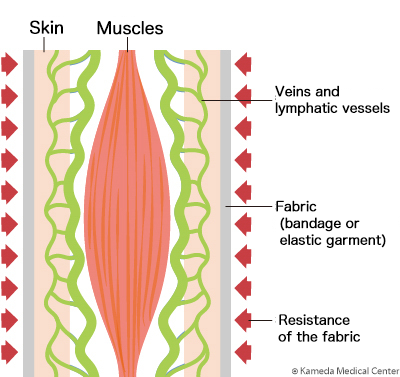

Exercise After Breast Cancer Surgery
Pain and anxiety after breast cancer surgery may reduce the opportunity to move the affected limb. If you do not move it, the range of motion of the shoulder joint may become narrower and painful.
Increasing your range of motion after breast cancer surgery is important to maintain your daily life, hobbies, and quality of life.
With the advent of sentinel lymph node biopsy, upper limb dysfunction associated with breast cancer surgery has decreased but remains, with the degree reported to be 66% in the axillary dissection group and 36% in the sentinel lymph node biopsy group. Functional impairment of the upper limbs is reported as decreased range of motion of the shoulder joint (1% to 67%), decreased muscle strength of the arm (9% to 28%), pain in the shoulder and arm (9% to 68%), and lymphedema (0% to 34%). In our center, rehabilitation begins on the third day after surgery, and an exercise program immediately after surgery is found to significantly recover the range of motion of the shoulder joint in the short term. Rehabilitation during hospitalization is negligible. It is important to do independent exercises after discharge. Try to gradually increase the range of motion by moving within the range that does not cause severe pain.
Warmup exercises to improve lymphatic flow
Backward rotation of the shoulders
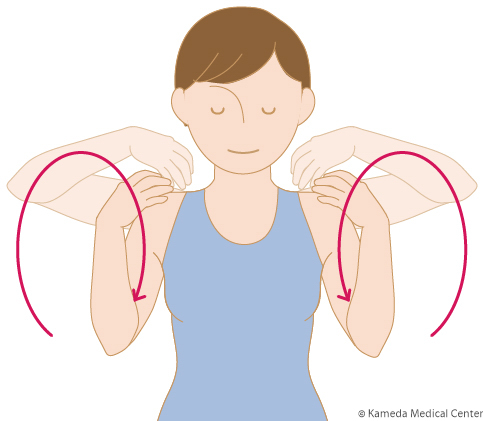
Abdominal breathing
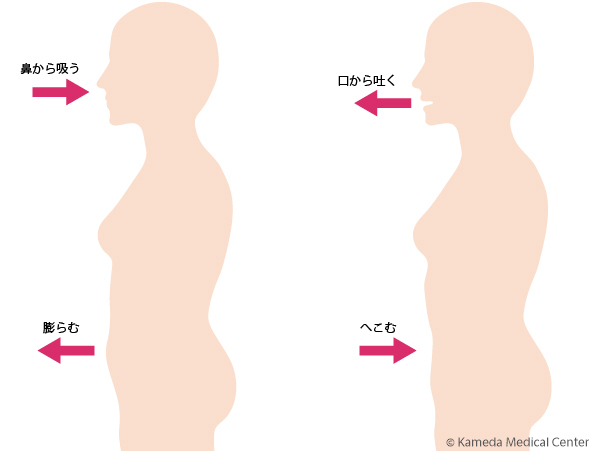
Exercises for the Range of Motion of Shoulder Joints
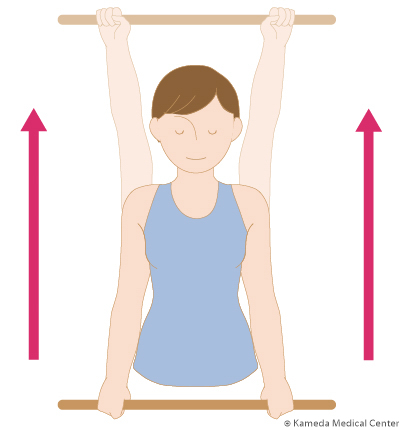
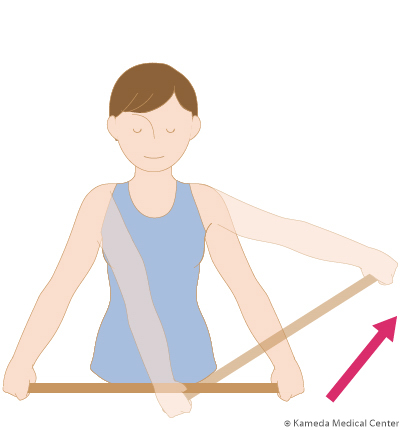
Stretching with a Wall
Exercising the shoulder joints also helps to strengthen muscles and improve range of motion, which enables you to resume your hobbies and improve your quality of life. Combined with exercise therapy such as aerobic exercise, it can also help prevent lymphedema by strengthening muscles and reducing fat. It is very important to continue the practice within a reasonable range.
References
- Kango Shi Rigaku Ryoho Shi No Tame No Lymph Fushu No Shugi to Care
- Best Practice for the Management of Lymphoedema

林明辰Akitatsu Hayashi
龟田总合医院/龟田京桥诊所
淋巴水肿中心 院长
世界上首次宣布使用超音波与干涉断层扫描(OCT)的尖端淋巴管形成技术。我们专注于使用此技术传播更有效的淋巴水肿手术。



